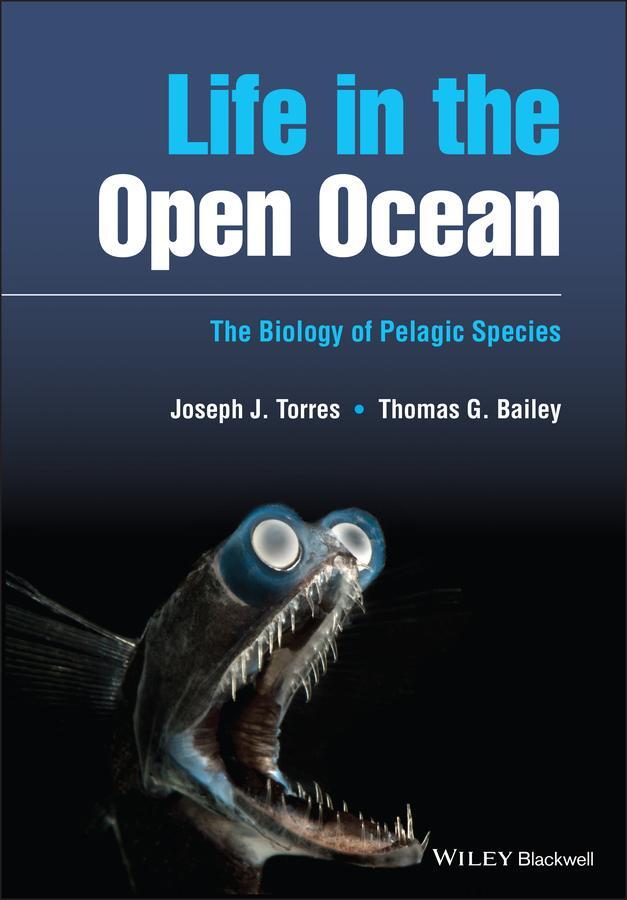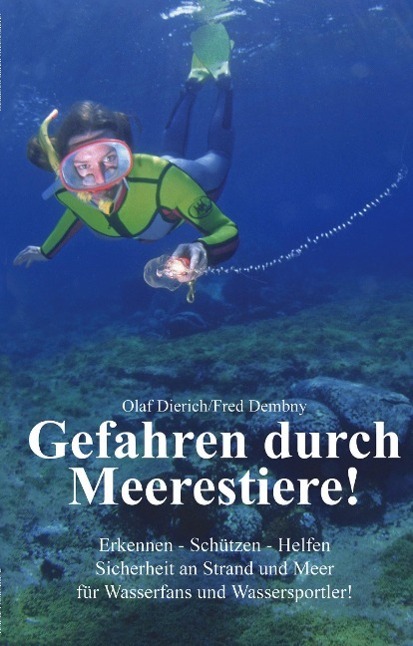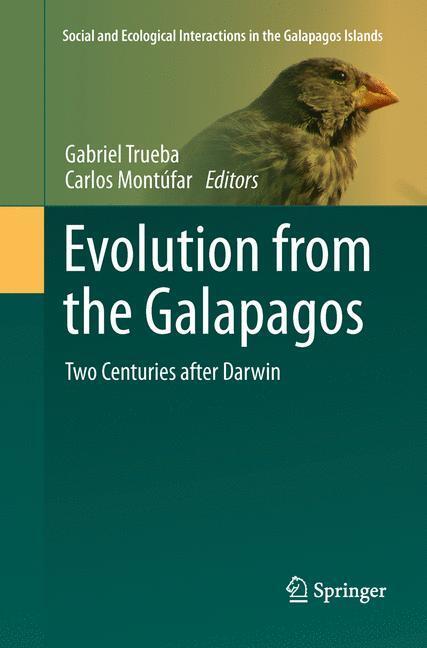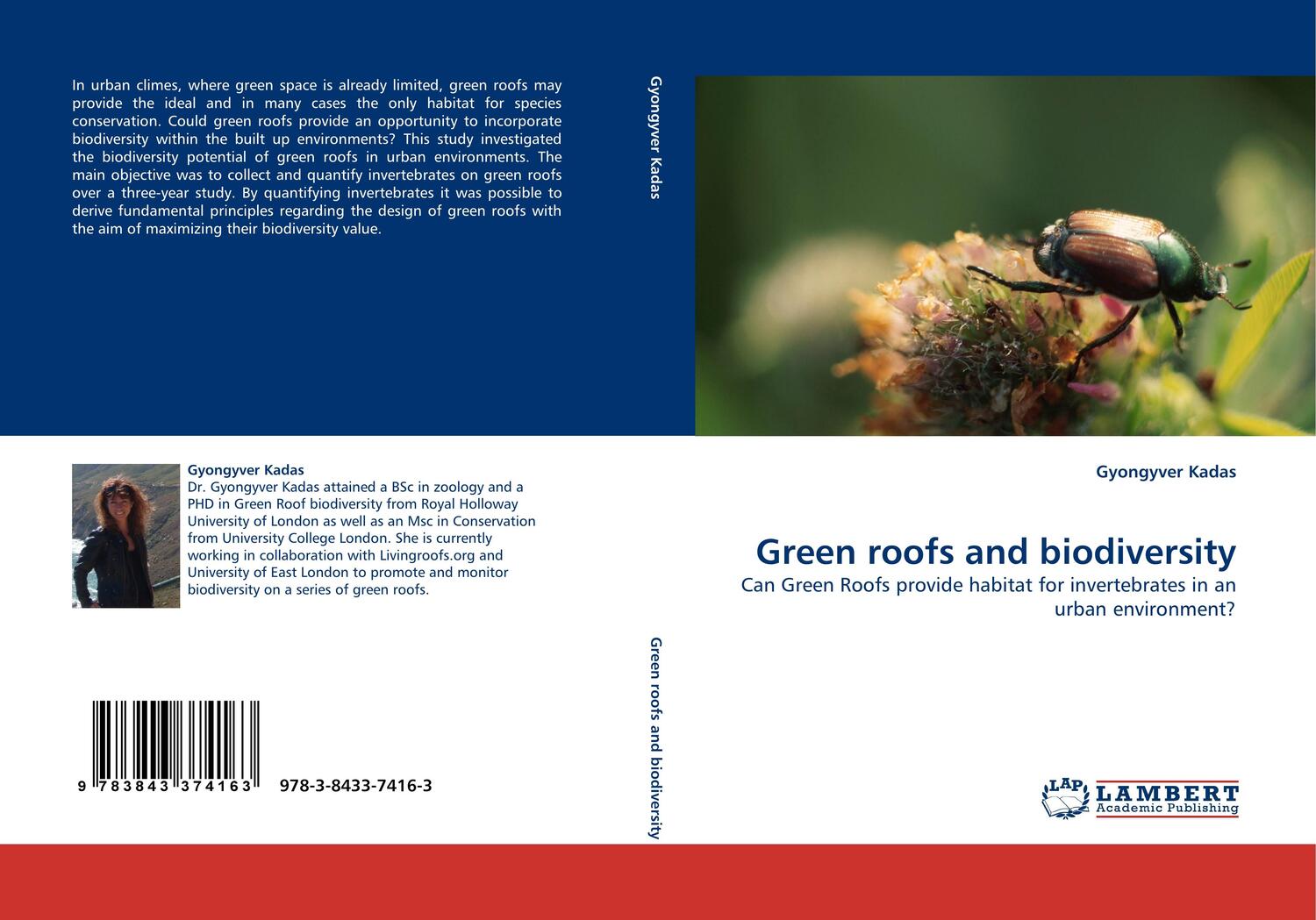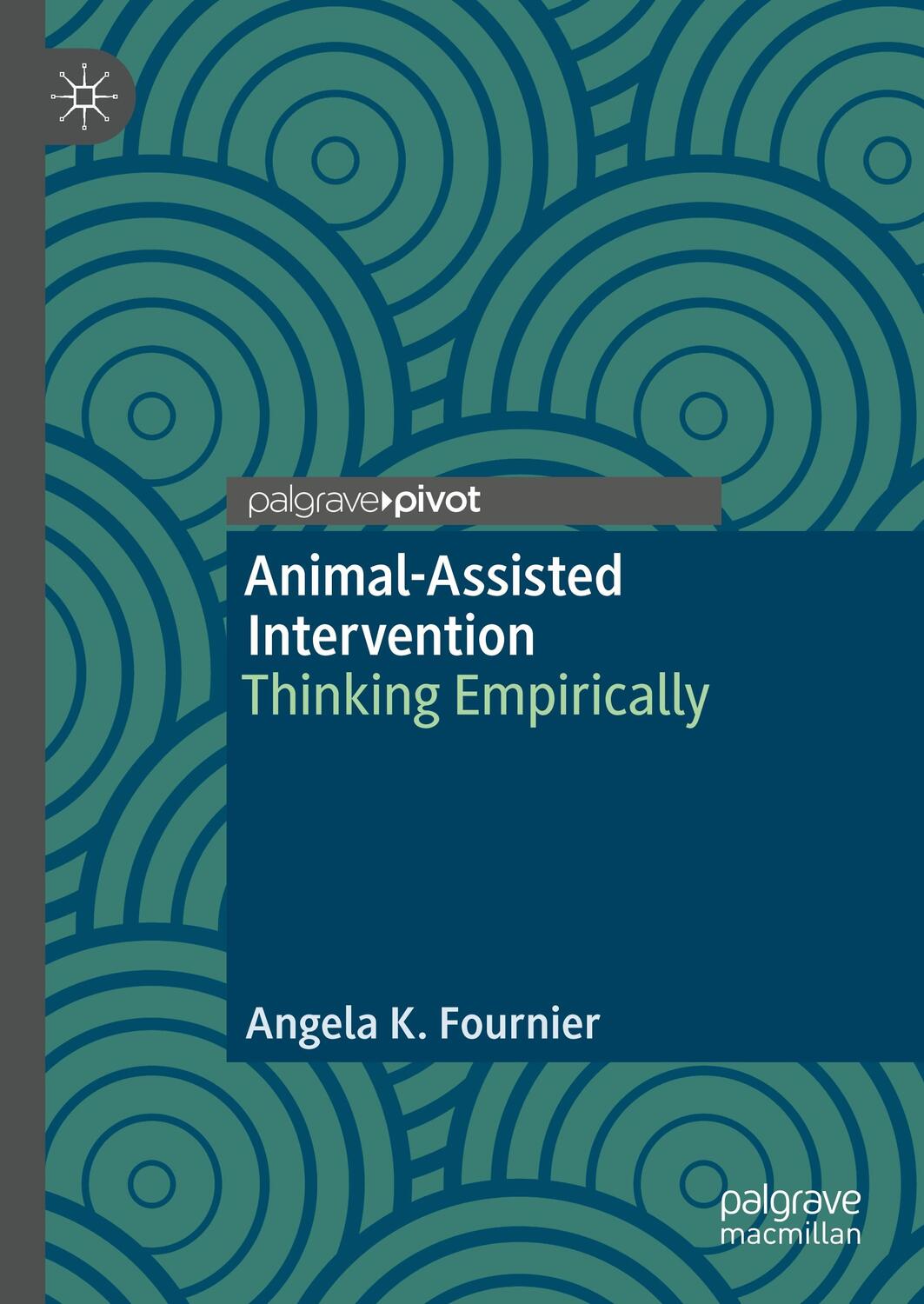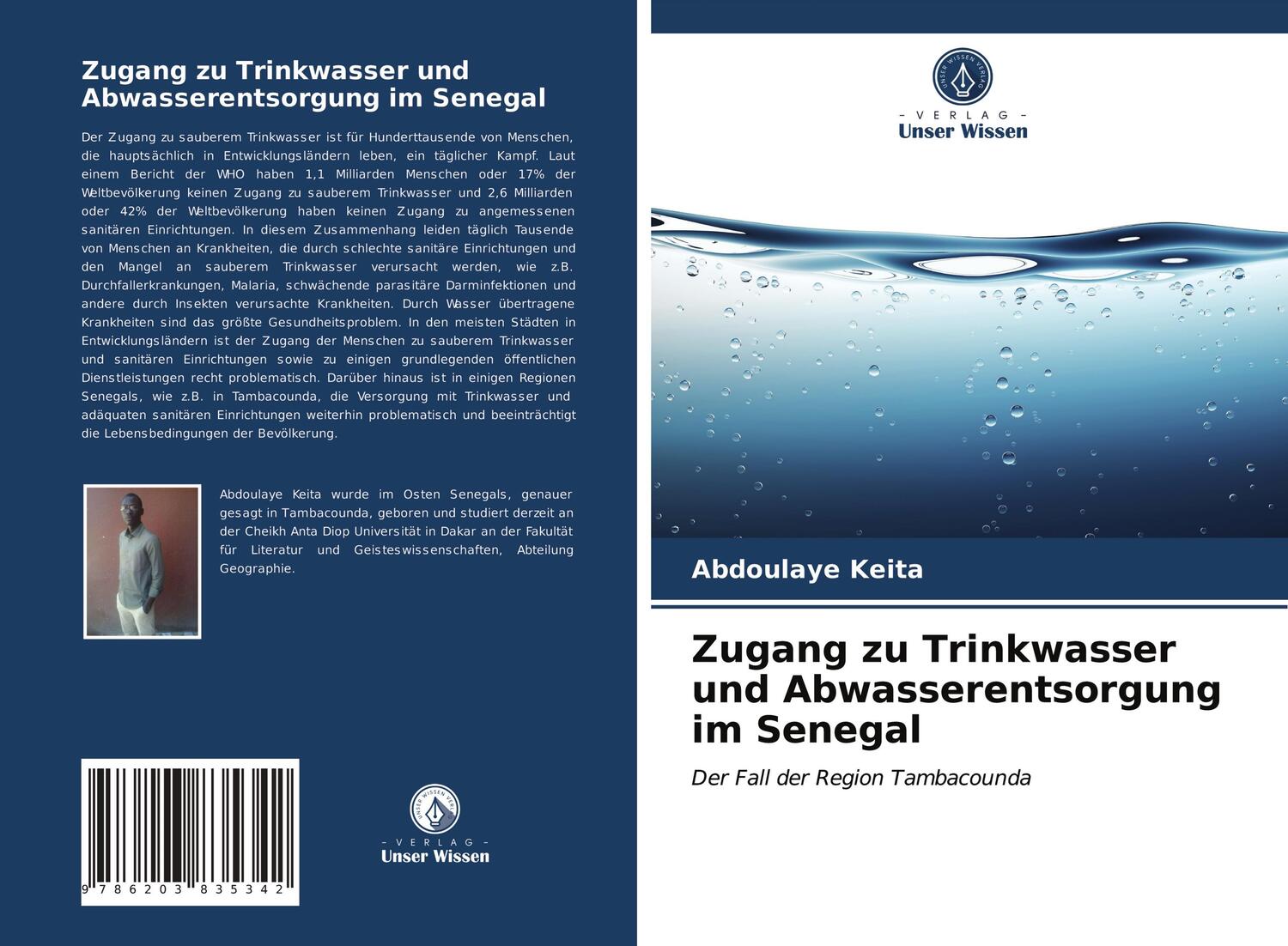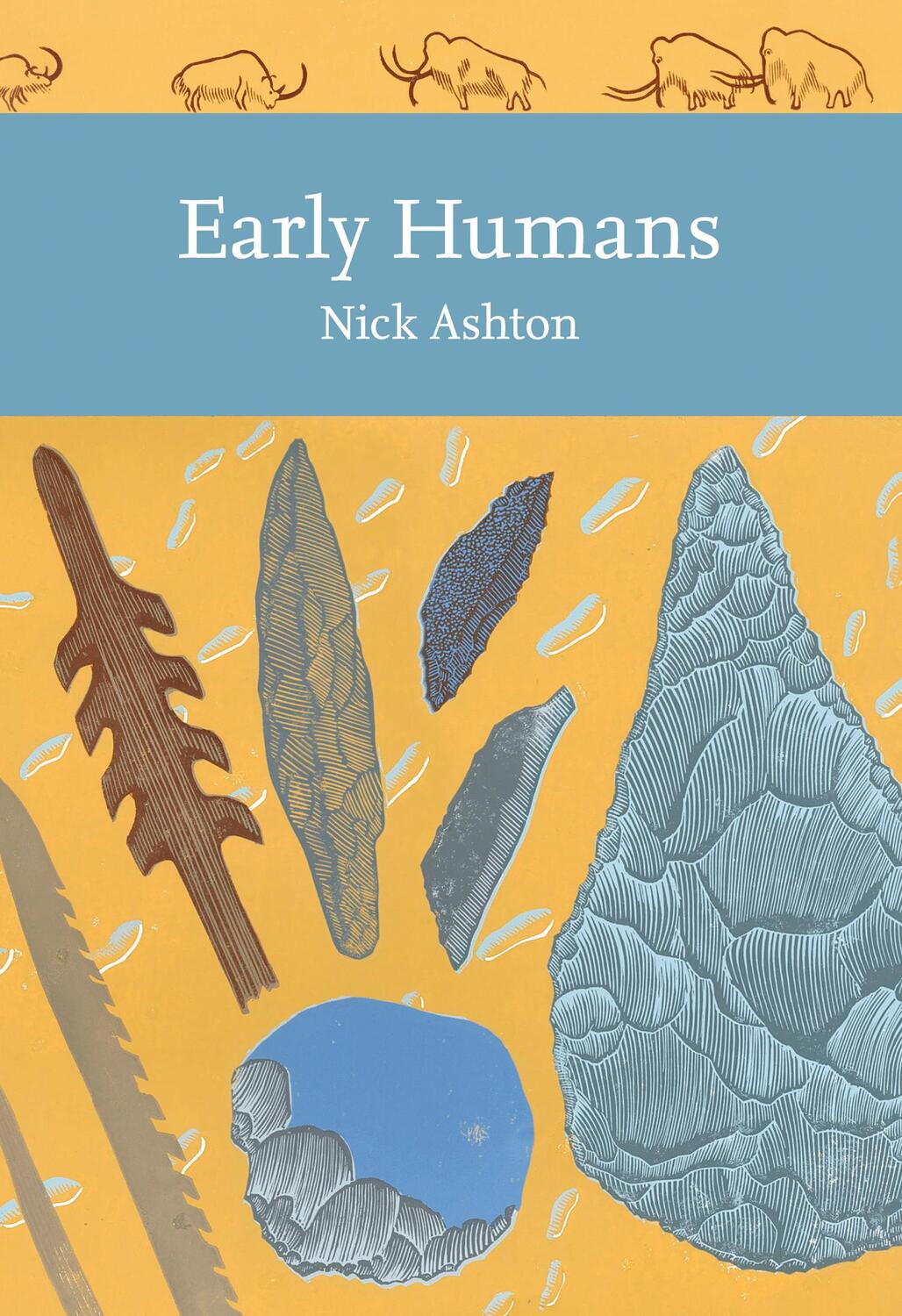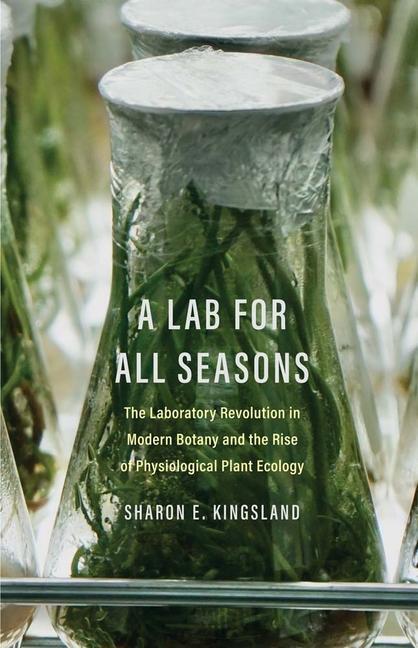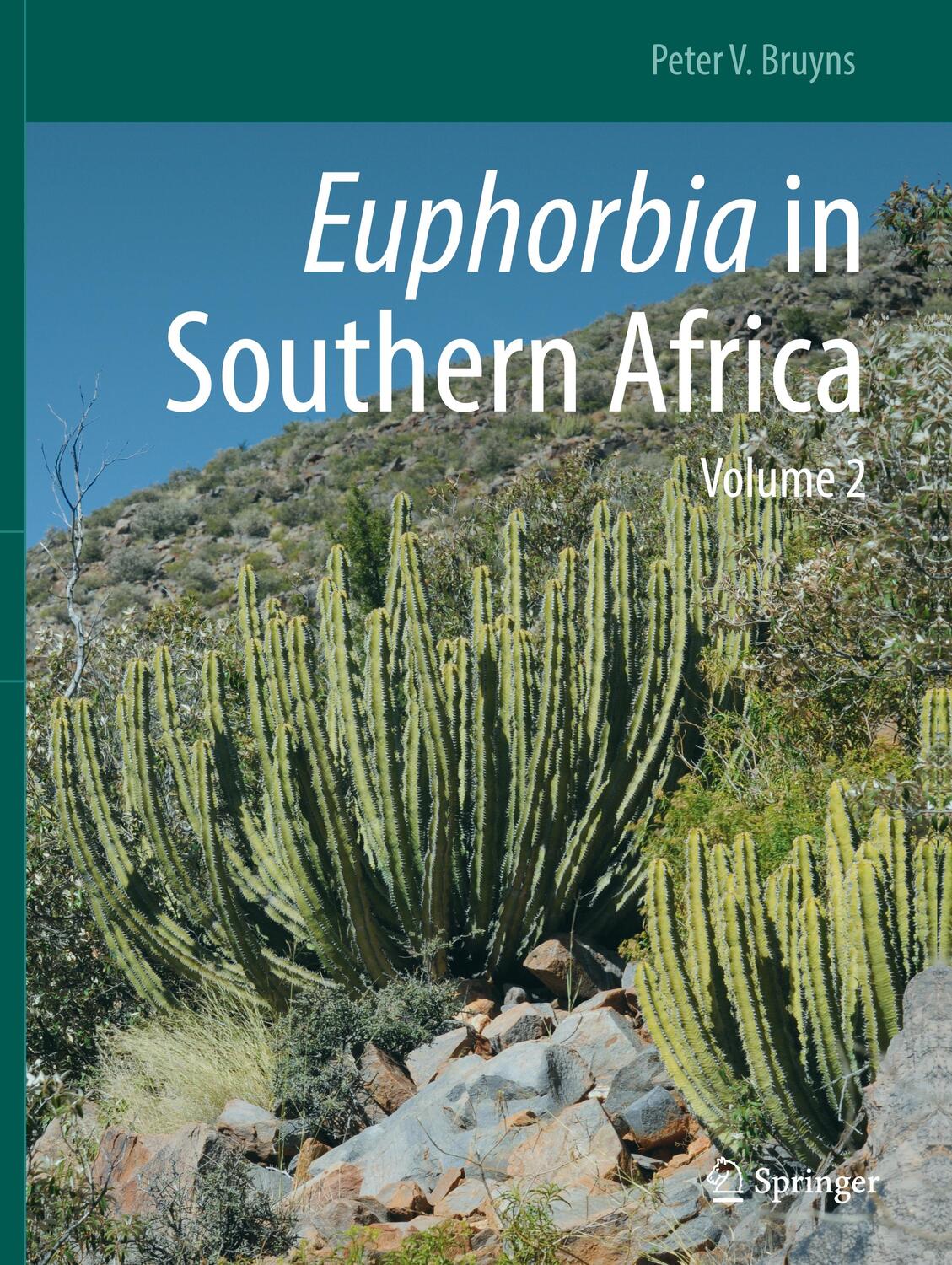Dekorationsartikel gehören nicht zum Leistungsumfang.
Sprache:
Englisch
104,95 €*
Versandkostenfrei per Post / DHL
Lieferzeit 1-2 Wochen
Kategorien:
Beschreibung
Life in the Open Ocean
Life in the Open Ocean: The Biology of Pelagic Species provides in-depth coverage of the different marine animal groups that form the communities inhabiting the ocean's pelagic realm. This comprehensive resource explores the physical environment, foraging strategies, energetics, locomotion, sensory mechanisms, global and vertical distributions, special adaptations, and other characteristics of a wide array of marine taxa.
Bringing together the most recent information available in a single volume, authors Joseph J. Torres and Thomas G. Bailey cover the Cnidaria (stinging jellies), the ctenophores (comb jellies), pelagic nemerteans, pelagic annelids, crustaceans, cephalopods and pelagic gastropods, invertebrate chordates, as well as micronektonic and larger fishes such as sharks, tunas, mackerels, and mahi-mahi. Detailed chapters on each pelagic group describe internal and external anatomy, classification and history, feeding and digestion, bioluminescent systems and their function, reproduction and development, respiration, excretion, nervous systems, and more. The first book of its kind to address all of the major animal groups comprising both the swimmers and drifters of the open sea, this important resource:
* Explains how different animals have adapted to live in the open-ocean environment
* Covers all sensory mechanisms of animals living in the pelagic habitat, including photoreception, mechanoreception, and chemoreception
* Treats the diverse micronekton assemblage as a community
* Includes a thorough introduction to the physical oceanography and properties of water in the pelagic realm
Life in the Open Ocean: The Biology of Pelagic Species is an excellent senior-level undergraduate and graduate textbook for courses in biology and biological oceanography, and a valuable reference for all those with interest in open-ocean biology.
Life in the Open Ocean: The Biology of Pelagic Species provides in-depth coverage of the different marine animal groups that form the communities inhabiting the ocean's pelagic realm. This comprehensive resource explores the physical environment, foraging strategies, energetics, locomotion, sensory mechanisms, global and vertical distributions, special adaptations, and other characteristics of a wide array of marine taxa.
Bringing together the most recent information available in a single volume, authors Joseph J. Torres and Thomas G. Bailey cover the Cnidaria (stinging jellies), the ctenophores (comb jellies), pelagic nemerteans, pelagic annelids, crustaceans, cephalopods and pelagic gastropods, invertebrate chordates, as well as micronektonic and larger fishes such as sharks, tunas, mackerels, and mahi-mahi. Detailed chapters on each pelagic group describe internal and external anatomy, classification and history, feeding and digestion, bioluminescent systems and their function, reproduction and development, respiration, excretion, nervous systems, and more. The first book of its kind to address all of the major animal groups comprising both the swimmers and drifters of the open sea, this important resource:
* Explains how different animals have adapted to live in the open-ocean environment
* Covers all sensory mechanisms of animals living in the pelagic habitat, including photoreception, mechanoreception, and chemoreception
* Treats the diverse micronekton assemblage as a community
* Includes a thorough introduction to the physical oceanography and properties of water in the pelagic realm
Life in the Open Ocean: The Biology of Pelagic Species is an excellent senior-level undergraduate and graduate textbook for courses in biology and biological oceanography, and a valuable reference for all those with interest in open-ocean biology.
Life in the Open Ocean
Life in the Open Ocean: The Biology of Pelagic Species provides in-depth coverage of the different marine animal groups that form the communities inhabiting the ocean's pelagic realm. This comprehensive resource explores the physical environment, foraging strategies, energetics, locomotion, sensory mechanisms, global and vertical distributions, special adaptations, and other characteristics of a wide array of marine taxa.
Bringing together the most recent information available in a single volume, authors Joseph J. Torres and Thomas G. Bailey cover the Cnidaria (stinging jellies), the ctenophores (comb jellies), pelagic nemerteans, pelagic annelids, crustaceans, cephalopods and pelagic gastropods, invertebrate chordates, as well as micronektonic and larger fishes such as sharks, tunas, mackerels, and mahi-mahi. Detailed chapters on each pelagic group describe internal and external anatomy, classification and history, feeding and digestion, bioluminescent systems and their function, reproduction and development, respiration, excretion, nervous systems, and more. The first book of its kind to address all of the major animal groups comprising both the swimmers and drifters of the open sea, this important resource:
* Explains how different animals have adapted to live in the open-ocean environment
* Covers all sensory mechanisms of animals living in the pelagic habitat, including photoreception, mechanoreception, and chemoreception
* Treats the diverse micronekton assemblage as a community
* Includes a thorough introduction to the physical oceanography and properties of water in the pelagic realm
Life in the Open Ocean: The Biology of Pelagic Species is an excellent senior-level undergraduate and graduate textbook for courses in biology and biological oceanography, and a valuable reference for all those with interest in open-ocean biology.
Life in the Open Ocean: The Biology of Pelagic Species provides in-depth coverage of the different marine animal groups that form the communities inhabiting the ocean's pelagic realm. This comprehensive resource explores the physical environment, foraging strategies, energetics, locomotion, sensory mechanisms, global and vertical distributions, special adaptations, and other characteristics of a wide array of marine taxa.
Bringing together the most recent information available in a single volume, authors Joseph J. Torres and Thomas G. Bailey cover the Cnidaria (stinging jellies), the ctenophores (comb jellies), pelagic nemerteans, pelagic annelids, crustaceans, cephalopods and pelagic gastropods, invertebrate chordates, as well as micronektonic and larger fishes such as sharks, tunas, mackerels, and mahi-mahi. Detailed chapters on each pelagic group describe internal and external anatomy, classification and history, feeding and digestion, bioluminescent systems and their function, reproduction and development, respiration, excretion, nervous systems, and more. The first book of its kind to address all of the major animal groups comprising both the swimmers and drifters of the open sea, this important resource:
* Explains how different animals have adapted to live in the open-ocean environment
* Covers all sensory mechanisms of animals living in the pelagic habitat, including photoreception, mechanoreception, and chemoreception
* Treats the diverse micronekton assemblage as a community
* Includes a thorough introduction to the physical oceanography and properties of water in the pelagic realm
Life in the Open Ocean: The Biology of Pelagic Species is an excellent senior-level undergraduate and graduate textbook for courses in biology and biological oceanography, and a valuable reference for all those with interest in open-ocean biology.
Über den Autor
Joseph J. Torres is Emeritus Professor of Marine Science, College of Marine Science, University of South Florida, St Petersburg, FL, USA. He is an internationally-renowned marine biologist with research interests in the physiological ecology of the deep- and open-oceanic realms.
Thomas G. Bailey is retired director of NOAA's Caribbean Marine Research Center following a long career in deep-ocean science at the Harbor Branch Oceanographic Institution as head of the Department of Zooplankton Ecology. He is a highly respected in-situ marine scientist known for innovative techniques in capturing and experimenting with delicate sea creatures at great depth.
Thomas G. Bailey is retired director of NOAA's Caribbean Marine Research Center following a long career in deep-ocean science at the Harbor Branch Oceanographic Institution as head of the Department of Zooplankton Ecology. He is a highly respected in-situ marine scientist known for innovative techniques in capturing and experimenting with delicate sea creatures at great depth.
Inhaltsverzeichnis
Preface xviii
Acknowledgments xx
1 Physics and the Physical Environment 1
The Vastness of the Open Ocean 2
The Properties of Water 2
Density 4
Viscosity 5
Reynolds Number 6
Drag 7
Temperature 8
The Oceans and Ocean Basins 9
Ocean Circulation 10
Surface Currents: Ocean Gyres and Geostrophic Flow 10
Ocean Gyres and Geostrophic Flow 15
Upwelling 16
Deep-Ocean Circulation 16
Water Masses 18
Oxygen 24
Pressure 24
Sound 26
Light 29
Absorption and Scattering 31
Traditional Depth Zones in the Ocean 33
Concluding Thoughts 34
References 35
2 Physiological Accommodation to Environmental Challenges 36
Temperature 37
Terms 38
Temperature Effects on Survival: The Tolerance Polygon 39
Temperature Effects on Rate Processes - The Q10 Approximation 41
Patterns of Thermal Acclimation 43
Climatic Adaptation in Ectotherms 44
Temperature Compensation via Changes in Enzyme Concentration: The Quantitative Strategy for Short-term Change 47
Compensation via Changes in Enzyme Quality - Isozymes, Allozymes, and Temperature Adaptation 47
What Properties of Enzymes Can Be Changed? 51
Lipids and Temperature 53
A Membrane Primer 54
Pressure 59
Early Work 60
Later Work 61
Whole Animal Work 63
Molecular Mechanisms of Adaptation to Pressure 64
Pressure and Membranes 68
Oxygen 69
Severity of Oxygen Minima, "Dead Zones," and the Intertidal 71
Adaptations to Oxygen Minima 71
The Aerobic Strategy 71
Salinity 75
Depth 77
Concluding Thoughts 83
References 84
3 The Cnidaria 89
Introduction 89
Classification 89
History 89
Classification Schemes 90
Phylum Cnidaria 91
Subphylum Medusozoa 91
Subphylum Anthozoa 91
Subphylum Myxozoa 91
The Hydromedusae 92
Morphology Basics 92
Morphological Detail and Life Histories 95
The Scyphomedusae 99
Basic Characteristics 99
Morphological Detail and Life Histories 101
General 101
Coronatae 101
Semaeostomae 102
Rhizostomae 104
The Cubomedusae 105
Foraging Strategies 105
General Considerations 106
The Cnidae 107
Venoms 108
Interaction with Prey 109
Direct Interception 110
Encounter Zone 110
The Model 114
Swimming and Hunting Behavior 115
Water Flow and Swimming 115
Attraction Between Predator and Prey 116
Diets, Feeding Rates, and Impacts on Prey Populations 117
Rogue Hydroids: Predatory Polyps in the Midwater 119
Feeding in the Cubomedusae 120
Locomotion 121
The Mesoglea 123
Nerve Nets and Nervous Control of Swimming 124
Senses and Sensory Mechanisms 125
The Siphonophores 127
Terminology and Affinities of Siphonophore "Persons" 128
Whole Animal Organization 134
Life Histories 137
The Siphonophore Conundrum 137
Feeding 138
Fishing Behavior 138
Digestion 139
Diets and Selectivity 139
Ecological Importance 141
Locomotion 141
Buoyancy 143
Vertical Distribution 144
Diurnal Vertical Migration 146
Geographical Distribution 147
Organization and Sensory Mechanisms 147
Epithelial Conduction vs. Neural Conduction 148
The Cnidaria Formerly Known as Chondrophora 150
Classification 150
Characteristics of the Chondrophoran Medusa 151
Evolution Within the Chondrophora 151
Feeding in the Chondrophora 151
Locomotion 151
References 153
4 The Ctenophora 159
Introduction 159
Classification 159
History 159
Classification Schemes 160
Ctenophore Basics 161
Morphology 162
Cydippida 162
Lobata 165
Cestida 168
Beroida 168
Platyctenida 168
Ganeshida 171
Thalassocalycida 173
Foraging Strategies 173
General Considerations 173
Interaction with Prey 173
The Cydippids 173
The Lobates 174
The Cestids 175
The Beroids 175
The Platyctenids 178
The Ganeshids 178
The Thalassocalycids 178
Specialists 178
Diet, Feeding Rates, and Impacts on Prey Populations 178
Ctenophores as Invasive Species 179
Digestion 181
Nerves and Sense Organs: Coordination and Conduction 181
Locomotion 182
Distribution 185
Ctenophores and Evolution 186
References 189
5 The Nemertea 192
Introduction 192
Classification 193
History 193
Of Germ Layers and Body Cavities 194
Hydrostatic Skeletons 197
Classification 200
Morphology 200
Proboscis Apparatus 202
The Pelagic Body Form and Locomotion 204
Color 205
Nervous System 205
Sense Organs 207
Circulatory System 207
Excretory System 209
Digestive System 211
Reproduction 213
Development 215
Foraging Strategies 215
Vertical and Geographic Distributions 215
References 217
6 The Annelida 219
Introduction 219
History 221
Classification 222
Phylum Annelida 224
Class Polychaeta 224
Subclass Echiura 225
Subclass Errantia 226
Class Clitellata 226
Subclass Oligochaeta 227
Subclass Hirudinea 228
The Pelagic Polychaetes 228
Polychaete Subclass Errantia 229
Order Phyllodocida 229
Polychaete Subclass Sedentaria 229
Order Terebellida 231
Morphology 231
General 231
External Anatomy 233
The Head Region 234
The Trunk or Metastomial Region 236
Internal Anatomy 239
Excretory System 241
Pelagic Species 243
The Nervous System 244
Sense Organs 244
Circulatory System 246
Pelagic Species 249
Gas Exchange 249
Pelagic Species 249
Digestive System 250
Reproduction 251
Epitoky 252
Synchronicity 252
The Pelagic Species 254
Tomopteris 254
Alciopini and Lopadorrynchidae 254
Development 255
Locomotion 255
Foraging Strategies 256
The Hunters 256
Diets 258
The Suspension Feeders 258
Poeobiidae, Chaetopteridae 259
Distributions 259
Geographical 259
Vertical 267
Bioluminescence 267
References 268
7 The Crustacea 273
Introduction 273
Arthropod Classification 273
History 273
Subphylum Crustacea 276
Subphylum Hexapoda 277
Subphylum Myriapoda 277
Subphylum Chelicerata 277
Panarthropoda Phyla 277
Phylum Onychophora 277
Phylum Tardigrada 277
Synopsis of Universal Arthropod Characteristics 278
The Crustacea 280
Characteristics 281
Classification 281
Subphylum Crustacea 283
Class Remipedia 283
Class Cephalocarida 283
Class Branchiopoda 283
Class Copepoda 283
Class Thecostraca 283
Class Tantulocarida 283
Class Mystacocarida 283
Class Branchiura 283
Class Pentastomida 284
Class Ostracoda 284
Class Malacostraca 284
Subclass Phyllocarida 284
Subclass Hoplocarida 284
Subclass Eumalacostraca 284
Crustacean Systems 292
Integument and Molting 292
Integument 292
Molting 293
Joints and Appendages 296
Joints 296
Appendages 297
Excretory System 297
Extrarenal Mechanisms 301
How the System Works 303
Nitrogen Excretion 303
The Nervous System and Sensory Mechanisms 303
The Central Nervous System 303
Sensory Modalities 305
Photoreception 305
Mechanoreception 308
Chemoreception 310
Circulatory and Respiratory Systems 311
Circulation and Oxygen Transport in the Blood: Hemocyanin 317
Digestive System 318
Basic Development 319
The Micronektonic Crustacea 319
The Pelagic Eucarida 321
Order Euphausiacea 321
Ecological Factors 339
Order Decapoda 346
Infraorder Anomura; Superfamily Galatheoidea; Family Munididae; Genera Pleuroncodes, Munida, and Cervimunida 378
Order Amphionidacea 379
Superorder Peracarida 380
Orders Lophogastrida and Mysida 380
Order Amphipoda 397
Cameo Players 420
References 424
8 The Mollusca 439
Introduction 439
lassification 440
History 440
The Pelagic Molluscs 441
Phylum Mollusca 442
Class Caudofoveata 442
Class Solenogastres 442
Class Monoplacophora 442
Class Polyplacophora 442
Class Scaphopoda 443
Class Bivalvia 444
Class Gastropoda 445
Class Cephalopoda 445
Body Organization 445
The Gastropoda 445
Classification 445
Class Gastropoda 449
Classification Below Subclass Given for Pelagic Species Only 449
Gastropod Systems and Structures 451
The Digestive Tract 451
Circulation 454
Respiration 457
Excretion 461
Shell Formation 464
The Nervous System 466
Sensory Mechanisms 469
The Pelagic Gastropods: Anatomy and Habits 475
The Janthinid Snails 475
The Heteropods 477
The Pteropods 491
Order Pteropoda 492
The Nudibranchs 516
The Cephalopoda 525
Classification 528
Basic Anatomy of the Major Cephalopod Groups 529
General 529
The Nautilida 529
The Sepiida and Spirulida 531
The Myopsida and Oegopsida 532
The Octopodiformes 536
Cephalopod Systems 540
Feeding and Digestion 540
Circulation 544
Gas Exchange 544
Excretion 549
Nervous System and Sensory Mechanisms 552
Locomotion and Buoyancy 569
Life Histories 575
Reproduction and Development 578
Vertical Distribution and Migration 582
Geographic Distribution 588
References 589
9 The Chordata 603
Introduction 603
Deuterostomes and the Phylogenetic Toolkit 604
Classification 607
ubphylum Tunicata 607
Class Ascidiacea (2935) 607
Class Appendicularia (68) 607
Class Thaliacea (78) 607
Basic Anatomy and Life History 609
The Ascidians 609
The Pyrosomes 610
The Salps 613
The Doliolids 618
The Appendicularia 625
The Appendicularian House 629
Tunicate Systems 634
Locomotion and Buoyancy 634
Pyrosomes 634
Salps 635
Doliolids 637
Appendicularia 638
Nervous Systems and Sensory Mechanisms 638
Pyrosomes 639
Doliolids 639
Salps 641
Appendicularia 643
Gas Exchange, Circulation, and Excretion 645
Trophic Role 647
Bioluminescence 653
Predators, Parasites and Other Interactions 654
Geographic and Vertical Distributions 656
References 660
10 The Fishes 669
Introduction 669
The Deep-Sea Groups 672
A Brief History of Fishes 674
The Jawless Fishes 674
The Jawed Fishes 676
Teleosts 676
Elasmobranchs 677
Holocephali 677
The Classes of Living Fishes 678
Class Myxini 678
Class Petromyzonti 679
Class Elasmobranchii 682
Class Holocephali 691
Class Coelacanthi 693
Class Dipneusti 695
Class Cladistii 695
Class Actinopterygii 695
Subclass Chondrostei 696
Subclass Holostei 696
Subclass Teleostei 696
Fish Systems 758
Basic Anatomy 758
External Features and Terms 758
Skull and Skeleton 758
Feeding and Digestion 760
Food Acquisition, the Three Dominant Modes: Ramming, Sucking, and Biting 760
Food Sorting: The "Pharyngeal Jaws" 764
Digestion: The Alimentary Canal 765
Circulation, Respiration, and...
Acknowledgments xx
1 Physics and the Physical Environment 1
The Vastness of the Open Ocean 2
The Properties of Water 2
Density 4
Viscosity 5
Reynolds Number 6
Drag 7
Temperature 8
The Oceans and Ocean Basins 9
Ocean Circulation 10
Surface Currents: Ocean Gyres and Geostrophic Flow 10
Ocean Gyres and Geostrophic Flow 15
Upwelling 16
Deep-Ocean Circulation 16
Water Masses 18
Oxygen 24
Pressure 24
Sound 26
Light 29
Absorption and Scattering 31
Traditional Depth Zones in the Ocean 33
Concluding Thoughts 34
References 35
2 Physiological Accommodation to Environmental Challenges 36
Temperature 37
Terms 38
Temperature Effects on Survival: The Tolerance Polygon 39
Temperature Effects on Rate Processes - The Q10 Approximation 41
Patterns of Thermal Acclimation 43
Climatic Adaptation in Ectotherms 44
Temperature Compensation via Changes in Enzyme Concentration: The Quantitative Strategy for Short-term Change 47
Compensation via Changes in Enzyme Quality - Isozymes, Allozymes, and Temperature Adaptation 47
What Properties of Enzymes Can Be Changed? 51
Lipids and Temperature 53
A Membrane Primer 54
Pressure 59
Early Work 60
Later Work 61
Whole Animal Work 63
Molecular Mechanisms of Adaptation to Pressure 64
Pressure and Membranes 68
Oxygen 69
Severity of Oxygen Minima, "Dead Zones," and the Intertidal 71
Adaptations to Oxygen Minima 71
The Aerobic Strategy 71
Salinity 75
Depth 77
Concluding Thoughts 83
References 84
3 The Cnidaria 89
Introduction 89
Classification 89
History 89
Classification Schemes 90
Phylum Cnidaria 91
Subphylum Medusozoa 91
Subphylum Anthozoa 91
Subphylum Myxozoa 91
The Hydromedusae 92
Morphology Basics 92
Morphological Detail and Life Histories 95
The Scyphomedusae 99
Basic Characteristics 99
Morphological Detail and Life Histories 101
General 101
Coronatae 101
Semaeostomae 102
Rhizostomae 104
The Cubomedusae 105
Foraging Strategies 105
General Considerations 106
The Cnidae 107
Venoms 108
Interaction with Prey 109
Direct Interception 110
Encounter Zone 110
The Model 114
Swimming and Hunting Behavior 115
Water Flow and Swimming 115
Attraction Between Predator and Prey 116
Diets, Feeding Rates, and Impacts on Prey Populations 117
Rogue Hydroids: Predatory Polyps in the Midwater 119
Feeding in the Cubomedusae 120
Locomotion 121
The Mesoglea 123
Nerve Nets and Nervous Control of Swimming 124
Senses and Sensory Mechanisms 125
The Siphonophores 127
Terminology and Affinities of Siphonophore "Persons" 128
Whole Animal Organization 134
Life Histories 137
The Siphonophore Conundrum 137
Feeding 138
Fishing Behavior 138
Digestion 139
Diets and Selectivity 139
Ecological Importance 141
Locomotion 141
Buoyancy 143
Vertical Distribution 144
Diurnal Vertical Migration 146
Geographical Distribution 147
Organization and Sensory Mechanisms 147
Epithelial Conduction vs. Neural Conduction 148
The Cnidaria Formerly Known as Chondrophora 150
Classification 150
Characteristics of the Chondrophoran Medusa 151
Evolution Within the Chondrophora 151
Feeding in the Chondrophora 151
Locomotion 151
References 153
4 The Ctenophora 159
Introduction 159
Classification 159
History 159
Classification Schemes 160
Ctenophore Basics 161
Morphology 162
Cydippida 162
Lobata 165
Cestida 168
Beroida 168
Platyctenida 168
Ganeshida 171
Thalassocalycida 173
Foraging Strategies 173
General Considerations 173
Interaction with Prey 173
The Cydippids 173
The Lobates 174
The Cestids 175
The Beroids 175
The Platyctenids 178
The Ganeshids 178
The Thalassocalycids 178
Specialists 178
Diet, Feeding Rates, and Impacts on Prey Populations 178
Ctenophores as Invasive Species 179
Digestion 181
Nerves and Sense Organs: Coordination and Conduction 181
Locomotion 182
Distribution 185
Ctenophores and Evolution 186
References 189
5 The Nemertea 192
Introduction 192
Classification 193
History 193
Of Germ Layers and Body Cavities 194
Hydrostatic Skeletons 197
Classification 200
Morphology 200
Proboscis Apparatus 202
The Pelagic Body Form and Locomotion 204
Color 205
Nervous System 205
Sense Organs 207
Circulatory System 207
Excretory System 209
Digestive System 211
Reproduction 213
Development 215
Foraging Strategies 215
Vertical and Geographic Distributions 215
References 217
6 The Annelida 219
Introduction 219
History 221
Classification 222
Phylum Annelida 224
Class Polychaeta 224
Subclass Echiura 225
Subclass Errantia 226
Class Clitellata 226
Subclass Oligochaeta 227
Subclass Hirudinea 228
The Pelagic Polychaetes 228
Polychaete Subclass Errantia 229
Order Phyllodocida 229
Polychaete Subclass Sedentaria 229
Order Terebellida 231
Morphology 231
General 231
External Anatomy 233
The Head Region 234
The Trunk or Metastomial Region 236
Internal Anatomy 239
Excretory System 241
Pelagic Species 243
The Nervous System 244
Sense Organs 244
Circulatory System 246
Pelagic Species 249
Gas Exchange 249
Pelagic Species 249
Digestive System 250
Reproduction 251
Epitoky 252
Synchronicity 252
The Pelagic Species 254
Tomopteris 254
Alciopini and Lopadorrynchidae 254
Development 255
Locomotion 255
Foraging Strategies 256
The Hunters 256
Diets 258
The Suspension Feeders 258
Poeobiidae, Chaetopteridae 259
Distributions 259
Geographical 259
Vertical 267
Bioluminescence 267
References 268
7 The Crustacea 273
Introduction 273
Arthropod Classification 273
History 273
Subphylum Crustacea 276
Subphylum Hexapoda 277
Subphylum Myriapoda 277
Subphylum Chelicerata 277
Panarthropoda Phyla 277
Phylum Onychophora 277
Phylum Tardigrada 277
Synopsis of Universal Arthropod Characteristics 278
The Crustacea 280
Characteristics 281
Classification 281
Subphylum Crustacea 283
Class Remipedia 283
Class Cephalocarida 283
Class Branchiopoda 283
Class Copepoda 283
Class Thecostraca 283
Class Tantulocarida 283
Class Mystacocarida 283
Class Branchiura 283
Class Pentastomida 284
Class Ostracoda 284
Class Malacostraca 284
Subclass Phyllocarida 284
Subclass Hoplocarida 284
Subclass Eumalacostraca 284
Crustacean Systems 292
Integument and Molting 292
Integument 292
Molting 293
Joints and Appendages 296
Joints 296
Appendages 297
Excretory System 297
Extrarenal Mechanisms 301
How the System Works 303
Nitrogen Excretion 303
The Nervous System and Sensory Mechanisms 303
The Central Nervous System 303
Sensory Modalities 305
Photoreception 305
Mechanoreception 308
Chemoreception 310
Circulatory and Respiratory Systems 311
Circulation and Oxygen Transport in the Blood: Hemocyanin 317
Digestive System 318
Basic Development 319
The Micronektonic Crustacea 319
The Pelagic Eucarida 321
Order Euphausiacea 321
Ecological Factors 339
Order Decapoda 346
Infraorder Anomura; Superfamily Galatheoidea; Family Munididae; Genera Pleuroncodes, Munida, and Cervimunida 378
Order Amphionidacea 379
Superorder Peracarida 380
Orders Lophogastrida and Mysida 380
Order Amphipoda 397
Cameo Players 420
References 424
8 The Mollusca 439
Introduction 439
lassification 440
History 440
The Pelagic Molluscs 441
Phylum Mollusca 442
Class Caudofoveata 442
Class Solenogastres 442
Class Monoplacophora 442
Class Polyplacophora 442
Class Scaphopoda 443
Class Bivalvia 444
Class Gastropoda 445
Class Cephalopoda 445
Body Organization 445
The Gastropoda 445
Classification 445
Class Gastropoda 449
Classification Below Subclass Given for Pelagic Species Only 449
Gastropod Systems and Structures 451
The Digestive Tract 451
Circulation 454
Respiration 457
Excretion 461
Shell Formation 464
The Nervous System 466
Sensory Mechanisms 469
The Pelagic Gastropods: Anatomy and Habits 475
The Janthinid Snails 475
The Heteropods 477
The Pteropods 491
Order Pteropoda 492
The Nudibranchs 516
The Cephalopoda 525
Classification 528
Basic Anatomy of the Major Cephalopod Groups 529
General 529
The Nautilida 529
The Sepiida and Spirulida 531
The Myopsida and Oegopsida 532
The Octopodiformes 536
Cephalopod Systems 540
Feeding and Digestion 540
Circulation 544
Gas Exchange 544
Excretion 549
Nervous System and Sensory Mechanisms 552
Locomotion and Buoyancy 569
Life Histories 575
Reproduction and Development 578
Vertical Distribution and Migration 582
Geographic Distribution 588
References 589
9 The Chordata 603
Introduction 603
Deuterostomes and the Phylogenetic Toolkit 604
Classification 607
ubphylum Tunicata 607
Class Ascidiacea (2935) 607
Class Appendicularia (68) 607
Class Thaliacea (78) 607
Basic Anatomy and Life History 609
The Ascidians 609
The Pyrosomes 610
The Salps 613
The Doliolids 618
The Appendicularia 625
The Appendicularian House 629
Tunicate Systems 634
Locomotion and Buoyancy 634
Pyrosomes 634
Salps 635
Doliolids 637
Appendicularia 638
Nervous Systems and Sensory Mechanisms 638
Pyrosomes 639
Doliolids 639
Salps 641
Appendicularia 643
Gas Exchange, Circulation, and Excretion 645
Trophic Role 647
Bioluminescence 653
Predators, Parasites and Other Interactions 654
Geographic and Vertical Distributions 656
References 660
10 The Fishes 669
Introduction 669
The Deep-Sea Groups 672
A Brief History of Fishes 674
The Jawless Fishes 674
The Jawed Fishes 676
Teleosts 676
Elasmobranchs 677
Holocephali 677
The Classes of Living Fishes 678
Class Myxini 678
Class Petromyzonti 679
Class Elasmobranchii 682
Class Holocephali 691
Class Coelacanthi 693
Class Dipneusti 695
Class Cladistii 695
Class Actinopterygii 695
Subclass Chondrostei 696
Subclass Holostei 696
Subclass Teleostei 696
Fish Systems 758
Basic Anatomy 758
External Features and Terms 758
Skull and Skeleton 758
Feeding and Digestion 760
Food Acquisition, the Three Dominant Modes: Ramming, Sucking, and Biting 760
Food Sorting: The "Pharyngeal Jaws" 764
Digestion: The Alimentary Canal 765
Circulation, Respiration, and...
Details
| Erscheinungsjahr: | 2022 |
|---|---|
| Fachbereich: | Ökologie |
| Genre: | Biologie |
| Rubrik: | Naturwissenschaften & Technik |
| Medium: | Buch |
| Seiten: | 1008 |
| Inhalt: | 1008 S. |
| ISBN-13: | 9781405145299 |
| ISBN-10: | 1405145293 |
| Sprache: | Englisch |
| Herstellernummer: | 1A405145290 |
| Einband: | Gebunden |
| Autor: |
Torres, Joseph J.
Bailey, Thomas G. |
| Hersteller: | John Wiley and Sons Ltd |
| Maße: | 179 x 250 x 57 mm |
| Von/Mit: | Joseph J. Torres (u. a.) |
| Erscheinungsdatum: | 17.02.2022 |
| Gewicht: | 2,118 kg |
Über den Autor
Joseph J. Torres is Emeritus Professor of Marine Science, College of Marine Science, University of South Florida, St Petersburg, FL, USA. He is an internationally-renowned marine biologist with research interests in the physiological ecology of the deep- and open-oceanic realms.
Thomas G. Bailey is retired director of NOAA's Caribbean Marine Research Center following a long career in deep-ocean science at the Harbor Branch Oceanographic Institution as head of the Department of Zooplankton Ecology. He is a highly respected in-situ marine scientist known for innovative techniques in capturing and experimenting with delicate sea creatures at great depth.
Thomas G. Bailey is retired director of NOAA's Caribbean Marine Research Center following a long career in deep-ocean science at the Harbor Branch Oceanographic Institution as head of the Department of Zooplankton Ecology. He is a highly respected in-situ marine scientist known for innovative techniques in capturing and experimenting with delicate sea creatures at great depth.
Inhaltsverzeichnis
Preface xviii
Acknowledgments xx
1 Physics and the Physical Environment 1
The Vastness of the Open Ocean 2
The Properties of Water 2
Density 4
Viscosity 5
Reynolds Number 6
Drag 7
Temperature 8
The Oceans and Ocean Basins 9
Ocean Circulation 10
Surface Currents: Ocean Gyres and Geostrophic Flow 10
Ocean Gyres and Geostrophic Flow 15
Upwelling 16
Deep-Ocean Circulation 16
Water Masses 18
Oxygen 24
Pressure 24
Sound 26
Light 29
Absorption and Scattering 31
Traditional Depth Zones in the Ocean 33
Concluding Thoughts 34
References 35
2 Physiological Accommodation to Environmental Challenges 36
Temperature 37
Terms 38
Temperature Effects on Survival: The Tolerance Polygon 39
Temperature Effects on Rate Processes - The Q10 Approximation 41
Patterns of Thermal Acclimation 43
Climatic Adaptation in Ectotherms 44
Temperature Compensation via Changes in Enzyme Concentration: The Quantitative Strategy for Short-term Change 47
Compensation via Changes in Enzyme Quality - Isozymes, Allozymes, and Temperature Adaptation 47
What Properties of Enzymes Can Be Changed? 51
Lipids and Temperature 53
A Membrane Primer 54
Pressure 59
Early Work 60
Later Work 61
Whole Animal Work 63
Molecular Mechanisms of Adaptation to Pressure 64
Pressure and Membranes 68
Oxygen 69
Severity of Oxygen Minima, "Dead Zones," and the Intertidal 71
Adaptations to Oxygen Minima 71
The Aerobic Strategy 71
Salinity 75
Depth 77
Concluding Thoughts 83
References 84
3 The Cnidaria 89
Introduction 89
Classification 89
History 89
Classification Schemes 90
Phylum Cnidaria 91
Subphylum Medusozoa 91
Subphylum Anthozoa 91
Subphylum Myxozoa 91
The Hydromedusae 92
Morphology Basics 92
Morphological Detail and Life Histories 95
The Scyphomedusae 99
Basic Characteristics 99
Morphological Detail and Life Histories 101
General 101
Coronatae 101
Semaeostomae 102
Rhizostomae 104
The Cubomedusae 105
Foraging Strategies 105
General Considerations 106
The Cnidae 107
Venoms 108
Interaction with Prey 109
Direct Interception 110
Encounter Zone 110
The Model 114
Swimming and Hunting Behavior 115
Water Flow and Swimming 115
Attraction Between Predator and Prey 116
Diets, Feeding Rates, and Impacts on Prey Populations 117
Rogue Hydroids: Predatory Polyps in the Midwater 119
Feeding in the Cubomedusae 120
Locomotion 121
The Mesoglea 123
Nerve Nets and Nervous Control of Swimming 124
Senses and Sensory Mechanisms 125
The Siphonophores 127
Terminology and Affinities of Siphonophore "Persons" 128
Whole Animal Organization 134
Life Histories 137
The Siphonophore Conundrum 137
Feeding 138
Fishing Behavior 138
Digestion 139
Diets and Selectivity 139
Ecological Importance 141
Locomotion 141
Buoyancy 143
Vertical Distribution 144
Diurnal Vertical Migration 146
Geographical Distribution 147
Organization and Sensory Mechanisms 147
Epithelial Conduction vs. Neural Conduction 148
The Cnidaria Formerly Known as Chondrophora 150
Classification 150
Characteristics of the Chondrophoran Medusa 151
Evolution Within the Chondrophora 151
Feeding in the Chondrophora 151
Locomotion 151
References 153
4 The Ctenophora 159
Introduction 159
Classification 159
History 159
Classification Schemes 160
Ctenophore Basics 161
Morphology 162
Cydippida 162
Lobata 165
Cestida 168
Beroida 168
Platyctenida 168
Ganeshida 171
Thalassocalycida 173
Foraging Strategies 173
General Considerations 173
Interaction with Prey 173
The Cydippids 173
The Lobates 174
The Cestids 175
The Beroids 175
The Platyctenids 178
The Ganeshids 178
The Thalassocalycids 178
Specialists 178
Diet, Feeding Rates, and Impacts on Prey Populations 178
Ctenophores as Invasive Species 179
Digestion 181
Nerves and Sense Organs: Coordination and Conduction 181
Locomotion 182
Distribution 185
Ctenophores and Evolution 186
References 189
5 The Nemertea 192
Introduction 192
Classification 193
History 193
Of Germ Layers and Body Cavities 194
Hydrostatic Skeletons 197
Classification 200
Morphology 200
Proboscis Apparatus 202
The Pelagic Body Form and Locomotion 204
Color 205
Nervous System 205
Sense Organs 207
Circulatory System 207
Excretory System 209
Digestive System 211
Reproduction 213
Development 215
Foraging Strategies 215
Vertical and Geographic Distributions 215
References 217
6 The Annelida 219
Introduction 219
History 221
Classification 222
Phylum Annelida 224
Class Polychaeta 224
Subclass Echiura 225
Subclass Errantia 226
Class Clitellata 226
Subclass Oligochaeta 227
Subclass Hirudinea 228
The Pelagic Polychaetes 228
Polychaete Subclass Errantia 229
Order Phyllodocida 229
Polychaete Subclass Sedentaria 229
Order Terebellida 231
Morphology 231
General 231
External Anatomy 233
The Head Region 234
The Trunk or Metastomial Region 236
Internal Anatomy 239
Excretory System 241
Pelagic Species 243
The Nervous System 244
Sense Organs 244
Circulatory System 246
Pelagic Species 249
Gas Exchange 249
Pelagic Species 249
Digestive System 250
Reproduction 251
Epitoky 252
Synchronicity 252
The Pelagic Species 254
Tomopteris 254
Alciopini and Lopadorrynchidae 254
Development 255
Locomotion 255
Foraging Strategies 256
The Hunters 256
Diets 258
The Suspension Feeders 258
Poeobiidae, Chaetopteridae 259
Distributions 259
Geographical 259
Vertical 267
Bioluminescence 267
References 268
7 The Crustacea 273
Introduction 273
Arthropod Classification 273
History 273
Subphylum Crustacea 276
Subphylum Hexapoda 277
Subphylum Myriapoda 277
Subphylum Chelicerata 277
Panarthropoda Phyla 277
Phylum Onychophora 277
Phylum Tardigrada 277
Synopsis of Universal Arthropod Characteristics 278
The Crustacea 280
Characteristics 281
Classification 281
Subphylum Crustacea 283
Class Remipedia 283
Class Cephalocarida 283
Class Branchiopoda 283
Class Copepoda 283
Class Thecostraca 283
Class Tantulocarida 283
Class Mystacocarida 283
Class Branchiura 283
Class Pentastomida 284
Class Ostracoda 284
Class Malacostraca 284
Subclass Phyllocarida 284
Subclass Hoplocarida 284
Subclass Eumalacostraca 284
Crustacean Systems 292
Integument and Molting 292
Integument 292
Molting 293
Joints and Appendages 296
Joints 296
Appendages 297
Excretory System 297
Extrarenal Mechanisms 301
How the System Works 303
Nitrogen Excretion 303
The Nervous System and Sensory Mechanisms 303
The Central Nervous System 303
Sensory Modalities 305
Photoreception 305
Mechanoreception 308
Chemoreception 310
Circulatory and Respiratory Systems 311
Circulation and Oxygen Transport in the Blood: Hemocyanin 317
Digestive System 318
Basic Development 319
The Micronektonic Crustacea 319
The Pelagic Eucarida 321
Order Euphausiacea 321
Ecological Factors 339
Order Decapoda 346
Infraorder Anomura; Superfamily Galatheoidea; Family Munididae; Genera Pleuroncodes, Munida, and Cervimunida 378
Order Amphionidacea 379
Superorder Peracarida 380
Orders Lophogastrida and Mysida 380
Order Amphipoda 397
Cameo Players 420
References 424
8 The Mollusca 439
Introduction 439
lassification 440
History 440
The Pelagic Molluscs 441
Phylum Mollusca 442
Class Caudofoveata 442
Class Solenogastres 442
Class Monoplacophora 442
Class Polyplacophora 442
Class Scaphopoda 443
Class Bivalvia 444
Class Gastropoda 445
Class Cephalopoda 445
Body Organization 445
The Gastropoda 445
Classification 445
Class Gastropoda 449
Classification Below Subclass Given for Pelagic Species Only 449
Gastropod Systems and Structures 451
The Digestive Tract 451
Circulation 454
Respiration 457
Excretion 461
Shell Formation 464
The Nervous System 466
Sensory Mechanisms 469
The Pelagic Gastropods: Anatomy and Habits 475
The Janthinid Snails 475
The Heteropods 477
The Pteropods 491
Order Pteropoda 492
The Nudibranchs 516
The Cephalopoda 525
Classification 528
Basic Anatomy of the Major Cephalopod Groups 529
General 529
The Nautilida 529
The Sepiida and Spirulida 531
The Myopsida and Oegopsida 532
The Octopodiformes 536
Cephalopod Systems 540
Feeding and Digestion 540
Circulation 544
Gas Exchange 544
Excretion 549
Nervous System and Sensory Mechanisms 552
Locomotion and Buoyancy 569
Life Histories 575
Reproduction and Development 578
Vertical Distribution and Migration 582
Geographic Distribution 588
References 589
9 The Chordata 603
Introduction 603
Deuterostomes and the Phylogenetic Toolkit 604
Classification 607
ubphylum Tunicata 607
Class Ascidiacea (2935) 607
Class Appendicularia (68) 607
Class Thaliacea (78) 607
Basic Anatomy and Life History 609
The Ascidians 609
The Pyrosomes 610
The Salps 613
The Doliolids 618
The Appendicularia 625
The Appendicularian House 629
Tunicate Systems 634
Locomotion and Buoyancy 634
Pyrosomes 634
Salps 635
Doliolids 637
Appendicularia 638
Nervous Systems and Sensory Mechanisms 638
Pyrosomes 639
Doliolids 639
Salps 641
Appendicularia 643
Gas Exchange, Circulation, and Excretion 645
Trophic Role 647
Bioluminescence 653
Predators, Parasites and Other Interactions 654
Geographic and Vertical Distributions 656
References 660
10 The Fishes 669
Introduction 669
The Deep-Sea Groups 672
A Brief History of Fishes 674
The Jawless Fishes 674
The Jawed Fishes 676
Teleosts 676
Elasmobranchs 677
Holocephali 677
The Classes of Living Fishes 678
Class Myxini 678
Class Petromyzonti 679
Class Elasmobranchii 682
Class Holocephali 691
Class Coelacanthi 693
Class Dipneusti 695
Class Cladistii 695
Class Actinopterygii 695
Subclass Chondrostei 696
Subclass Holostei 696
Subclass Teleostei 696
Fish Systems 758
Basic Anatomy 758
External Features and Terms 758
Skull and Skeleton 758
Feeding and Digestion 760
Food Acquisition, the Three Dominant Modes: Ramming, Sucking, and Biting 760
Food Sorting: The "Pharyngeal Jaws" 764
Digestion: The Alimentary Canal 765
Circulation, Respiration, and...
Acknowledgments xx
1 Physics and the Physical Environment 1
The Vastness of the Open Ocean 2
The Properties of Water 2
Density 4
Viscosity 5
Reynolds Number 6
Drag 7
Temperature 8
The Oceans and Ocean Basins 9
Ocean Circulation 10
Surface Currents: Ocean Gyres and Geostrophic Flow 10
Ocean Gyres and Geostrophic Flow 15
Upwelling 16
Deep-Ocean Circulation 16
Water Masses 18
Oxygen 24
Pressure 24
Sound 26
Light 29
Absorption and Scattering 31
Traditional Depth Zones in the Ocean 33
Concluding Thoughts 34
References 35
2 Physiological Accommodation to Environmental Challenges 36
Temperature 37
Terms 38
Temperature Effects on Survival: The Tolerance Polygon 39
Temperature Effects on Rate Processes - The Q10 Approximation 41
Patterns of Thermal Acclimation 43
Climatic Adaptation in Ectotherms 44
Temperature Compensation via Changes in Enzyme Concentration: The Quantitative Strategy for Short-term Change 47
Compensation via Changes in Enzyme Quality - Isozymes, Allozymes, and Temperature Adaptation 47
What Properties of Enzymes Can Be Changed? 51
Lipids and Temperature 53
A Membrane Primer 54
Pressure 59
Early Work 60
Later Work 61
Whole Animal Work 63
Molecular Mechanisms of Adaptation to Pressure 64
Pressure and Membranes 68
Oxygen 69
Severity of Oxygen Minima, "Dead Zones," and the Intertidal 71
Adaptations to Oxygen Minima 71
The Aerobic Strategy 71
Salinity 75
Depth 77
Concluding Thoughts 83
References 84
3 The Cnidaria 89
Introduction 89
Classification 89
History 89
Classification Schemes 90
Phylum Cnidaria 91
Subphylum Medusozoa 91
Subphylum Anthozoa 91
Subphylum Myxozoa 91
The Hydromedusae 92
Morphology Basics 92
Morphological Detail and Life Histories 95
The Scyphomedusae 99
Basic Characteristics 99
Morphological Detail and Life Histories 101
General 101
Coronatae 101
Semaeostomae 102
Rhizostomae 104
The Cubomedusae 105
Foraging Strategies 105
General Considerations 106
The Cnidae 107
Venoms 108
Interaction with Prey 109
Direct Interception 110
Encounter Zone 110
The Model 114
Swimming and Hunting Behavior 115
Water Flow and Swimming 115
Attraction Between Predator and Prey 116
Diets, Feeding Rates, and Impacts on Prey Populations 117
Rogue Hydroids: Predatory Polyps in the Midwater 119
Feeding in the Cubomedusae 120
Locomotion 121
The Mesoglea 123
Nerve Nets and Nervous Control of Swimming 124
Senses and Sensory Mechanisms 125
The Siphonophores 127
Terminology and Affinities of Siphonophore "Persons" 128
Whole Animal Organization 134
Life Histories 137
The Siphonophore Conundrum 137
Feeding 138
Fishing Behavior 138
Digestion 139
Diets and Selectivity 139
Ecological Importance 141
Locomotion 141
Buoyancy 143
Vertical Distribution 144
Diurnal Vertical Migration 146
Geographical Distribution 147
Organization and Sensory Mechanisms 147
Epithelial Conduction vs. Neural Conduction 148
The Cnidaria Formerly Known as Chondrophora 150
Classification 150
Characteristics of the Chondrophoran Medusa 151
Evolution Within the Chondrophora 151
Feeding in the Chondrophora 151
Locomotion 151
References 153
4 The Ctenophora 159
Introduction 159
Classification 159
History 159
Classification Schemes 160
Ctenophore Basics 161
Morphology 162
Cydippida 162
Lobata 165
Cestida 168
Beroida 168
Platyctenida 168
Ganeshida 171
Thalassocalycida 173
Foraging Strategies 173
General Considerations 173
Interaction with Prey 173
The Cydippids 173
The Lobates 174
The Cestids 175
The Beroids 175
The Platyctenids 178
The Ganeshids 178
The Thalassocalycids 178
Specialists 178
Diet, Feeding Rates, and Impacts on Prey Populations 178
Ctenophores as Invasive Species 179
Digestion 181
Nerves and Sense Organs: Coordination and Conduction 181
Locomotion 182
Distribution 185
Ctenophores and Evolution 186
References 189
5 The Nemertea 192
Introduction 192
Classification 193
History 193
Of Germ Layers and Body Cavities 194
Hydrostatic Skeletons 197
Classification 200
Morphology 200
Proboscis Apparatus 202
The Pelagic Body Form and Locomotion 204
Color 205
Nervous System 205
Sense Organs 207
Circulatory System 207
Excretory System 209
Digestive System 211
Reproduction 213
Development 215
Foraging Strategies 215
Vertical and Geographic Distributions 215
References 217
6 The Annelida 219
Introduction 219
History 221
Classification 222
Phylum Annelida 224
Class Polychaeta 224
Subclass Echiura 225
Subclass Errantia 226
Class Clitellata 226
Subclass Oligochaeta 227
Subclass Hirudinea 228
The Pelagic Polychaetes 228
Polychaete Subclass Errantia 229
Order Phyllodocida 229
Polychaete Subclass Sedentaria 229
Order Terebellida 231
Morphology 231
General 231
External Anatomy 233
The Head Region 234
The Trunk or Metastomial Region 236
Internal Anatomy 239
Excretory System 241
Pelagic Species 243
The Nervous System 244
Sense Organs 244
Circulatory System 246
Pelagic Species 249
Gas Exchange 249
Pelagic Species 249
Digestive System 250
Reproduction 251
Epitoky 252
Synchronicity 252
The Pelagic Species 254
Tomopteris 254
Alciopini and Lopadorrynchidae 254
Development 255
Locomotion 255
Foraging Strategies 256
The Hunters 256
Diets 258
The Suspension Feeders 258
Poeobiidae, Chaetopteridae 259
Distributions 259
Geographical 259
Vertical 267
Bioluminescence 267
References 268
7 The Crustacea 273
Introduction 273
Arthropod Classification 273
History 273
Subphylum Crustacea 276
Subphylum Hexapoda 277
Subphylum Myriapoda 277
Subphylum Chelicerata 277
Panarthropoda Phyla 277
Phylum Onychophora 277
Phylum Tardigrada 277
Synopsis of Universal Arthropod Characteristics 278
The Crustacea 280
Characteristics 281
Classification 281
Subphylum Crustacea 283
Class Remipedia 283
Class Cephalocarida 283
Class Branchiopoda 283
Class Copepoda 283
Class Thecostraca 283
Class Tantulocarida 283
Class Mystacocarida 283
Class Branchiura 283
Class Pentastomida 284
Class Ostracoda 284
Class Malacostraca 284
Subclass Phyllocarida 284
Subclass Hoplocarida 284
Subclass Eumalacostraca 284
Crustacean Systems 292
Integument and Molting 292
Integument 292
Molting 293
Joints and Appendages 296
Joints 296
Appendages 297
Excretory System 297
Extrarenal Mechanisms 301
How the System Works 303
Nitrogen Excretion 303
The Nervous System and Sensory Mechanisms 303
The Central Nervous System 303
Sensory Modalities 305
Photoreception 305
Mechanoreception 308
Chemoreception 310
Circulatory and Respiratory Systems 311
Circulation and Oxygen Transport in the Blood: Hemocyanin 317
Digestive System 318
Basic Development 319
The Micronektonic Crustacea 319
The Pelagic Eucarida 321
Order Euphausiacea 321
Ecological Factors 339
Order Decapoda 346
Infraorder Anomura; Superfamily Galatheoidea; Family Munididae; Genera Pleuroncodes, Munida, and Cervimunida 378
Order Amphionidacea 379
Superorder Peracarida 380
Orders Lophogastrida and Mysida 380
Order Amphipoda 397
Cameo Players 420
References 424
8 The Mollusca 439
Introduction 439
lassification 440
History 440
The Pelagic Molluscs 441
Phylum Mollusca 442
Class Caudofoveata 442
Class Solenogastres 442
Class Monoplacophora 442
Class Polyplacophora 442
Class Scaphopoda 443
Class Bivalvia 444
Class Gastropoda 445
Class Cephalopoda 445
Body Organization 445
The Gastropoda 445
Classification 445
Class Gastropoda 449
Classification Below Subclass Given for Pelagic Species Only 449
Gastropod Systems and Structures 451
The Digestive Tract 451
Circulation 454
Respiration 457
Excretion 461
Shell Formation 464
The Nervous System 466
Sensory Mechanisms 469
The Pelagic Gastropods: Anatomy and Habits 475
The Janthinid Snails 475
The Heteropods 477
The Pteropods 491
Order Pteropoda 492
The Nudibranchs 516
The Cephalopoda 525
Classification 528
Basic Anatomy of the Major Cephalopod Groups 529
General 529
The Nautilida 529
The Sepiida and Spirulida 531
The Myopsida and Oegopsida 532
The Octopodiformes 536
Cephalopod Systems 540
Feeding and Digestion 540
Circulation 544
Gas Exchange 544
Excretion 549
Nervous System and Sensory Mechanisms 552
Locomotion and Buoyancy 569
Life Histories 575
Reproduction and Development 578
Vertical Distribution and Migration 582
Geographic Distribution 588
References 589
9 The Chordata 603
Introduction 603
Deuterostomes and the Phylogenetic Toolkit 604
Classification 607
ubphylum Tunicata 607
Class Ascidiacea (2935) 607
Class Appendicularia (68) 607
Class Thaliacea (78) 607
Basic Anatomy and Life History 609
The Ascidians 609
The Pyrosomes 610
The Salps 613
The Doliolids 618
The Appendicularia 625
The Appendicularian House 629
Tunicate Systems 634
Locomotion and Buoyancy 634
Pyrosomes 634
Salps 635
Doliolids 637
Appendicularia 638
Nervous Systems and Sensory Mechanisms 638
Pyrosomes 639
Doliolids 639
Salps 641
Appendicularia 643
Gas Exchange, Circulation, and Excretion 645
Trophic Role 647
Bioluminescence 653
Predators, Parasites and Other Interactions 654
Geographic and Vertical Distributions 656
References 660
10 The Fishes 669
Introduction 669
The Deep-Sea Groups 672
A Brief History of Fishes 674
The Jawless Fishes 674
The Jawed Fishes 676
Teleosts 676
Elasmobranchs 677
Holocephali 677
The Classes of Living Fishes 678
Class Myxini 678
Class Petromyzonti 679
Class Elasmobranchii 682
Class Holocephali 691
Class Coelacanthi 693
Class Dipneusti 695
Class Cladistii 695
Class Actinopterygii 695
Subclass Chondrostei 696
Subclass Holostei 696
Subclass Teleostei 696
Fish Systems 758
Basic Anatomy 758
External Features and Terms 758
Skull and Skeleton 758
Feeding and Digestion 760
Food Acquisition, the Three Dominant Modes: Ramming, Sucking, and Biting 760
Food Sorting: The "Pharyngeal Jaws" 764
Digestion: The Alimentary Canal 765
Circulation, Respiration, and...
Details
| Erscheinungsjahr: | 2022 |
|---|---|
| Fachbereich: | Ökologie |
| Genre: | Biologie |
| Rubrik: | Naturwissenschaften & Technik |
| Medium: | Buch |
| Seiten: | 1008 |
| Inhalt: | 1008 S. |
| ISBN-13: | 9781405145299 |
| ISBN-10: | 1405145293 |
| Sprache: | Englisch |
| Herstellernummer: | 1A405145290 |
| Einband: | Gebunden |
| Autor: |
Torres, Joseph J.
Bailey, Thomas G. |
| Hersteller: | John Wiley and Sons Ltd |
| Maße: | 179 x 250 x 57 mm |
| Von/Mit: | Joseph J. Torres (u. a.) |
| Erscheinungsdatum: | 17.02.2022 |
| Gewicht: | 2,118 kg |
Warnhinweis

